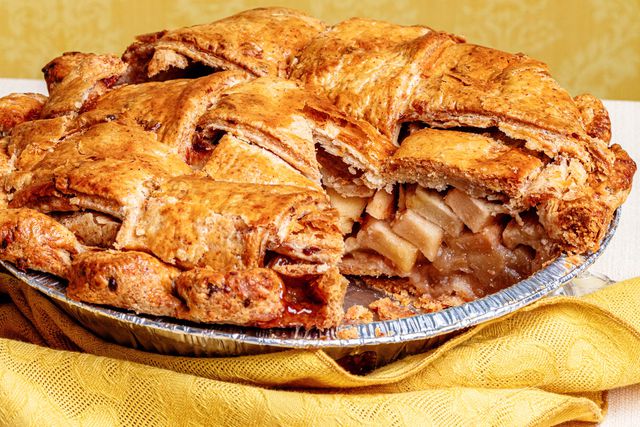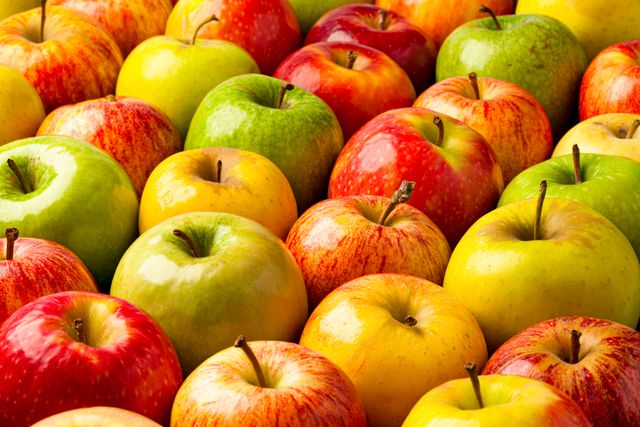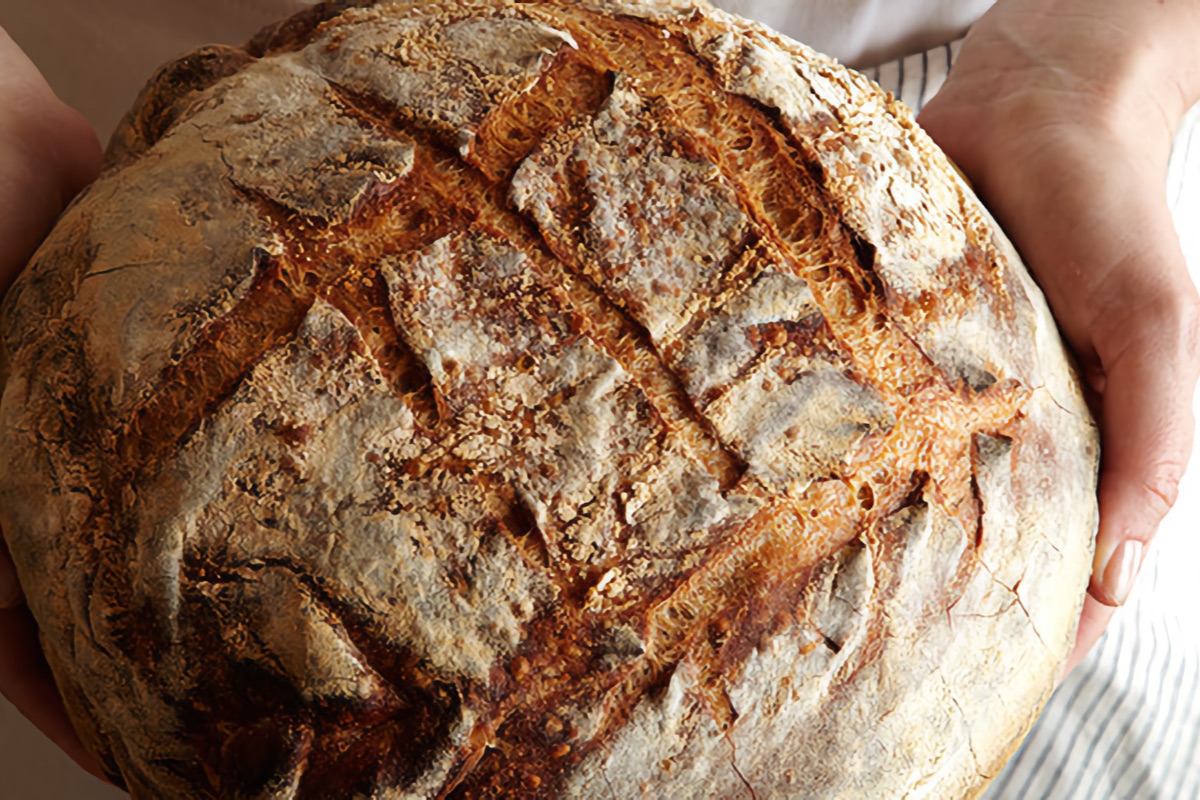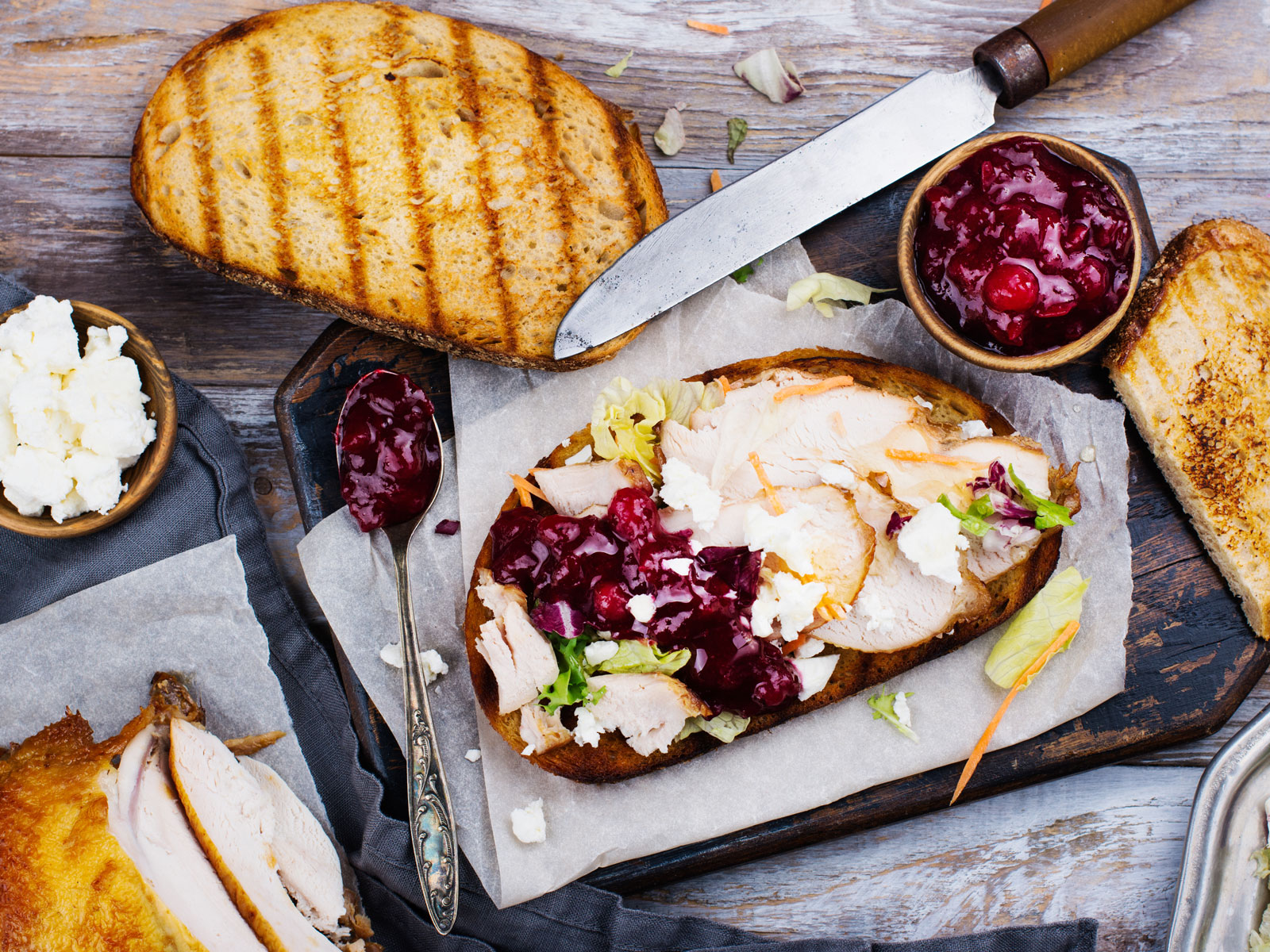The best apple pies put the focus on the whole fruit — they’re not called applesauce pies, after all! For the perfect apple pie, you want to look for apples that can maintain their structure and flavor when baked for a long time (and on that note, you should be baking your pie for longer than you think).
There are thousands of apple varieties out there, many of which will make for a delicious pie. “Firm, tart, and tasty are the three things I always tell people [to look for],” says baker and F&W contributor Martin Sorge, who won season 6 of The Great American Baking Show. “If you remember those three things, it doesn’t necessarily matter which variety of apple you’re using, as long as it’s firm and not soft or mealy.”
“I want the apples to be cooked through, but I don’t want them to be mushy. If you start with something that’s really crisp and firm and has great structure, by the time it cooks down, you’re still going to get a little bit of a bite with that finished dessert.”
Caroline Schiff, pastry chef and 2022 F&W Best New Chef
2022 F&W Best New Chef Caroline Schiff, who most recently ran the much-lauded pastry program at Gage & Tollner in Brooklyn, agrees. “Personally, when I am making something like an apple pie, I want the apples to be cooked through, but I don’t want them to be mushy. I want there to be a little bit of a toothsome quality to the filling,” she says. “If you start with something that’s really crisp and firm and has great structure, by the time it cooks down, you’re still going to get a little bit of a bite with that finished dessert.”
Here are some rules of thumb when choosing the best apples for a pie, plus common varieties at the supermarket that are up for the job.
How to choose an apple for pie
Pick a tart, firm apple
It might sound counterintuitive, but you don’t want to reach for overly-sweet apples when making an apple pie or tarte tatin. “I want the rest of the sugar and sweetness in the recipe to be balanced out by the apples’ tartness,” says Schiff. Sweeter, milder apples like Macintosh, Fuji, and Red Delicious don’t work well for pies; they also tend to break down more quickly when baking.
Instead, lean toward sweet-tart apples like Honeycrisp, or tart and tangy ones like Granny Smith. As for texture, “you want something that feels fairly hard, maybe even more firm than you would normally eat,” says Sorge. Schiff also suggests avoiding any apples with an overly waxy texture, which you’re more likely to see with supermarket apples than ones from the farmers market.
Use a mixed bag!
Both Schiff and Sorge recommend playing around with a mixture of apples for an interplay of flavors and textures. You could combine tart Granny Smith apples with sweet Pink Lady apples, for example. “My favorite thing to do is go to this orchard in Wisconsin and get a mixed bag of what I think are good apples to bake with, then put them in a pie,” says Sorge. “You get a lot of complexity and different flavors when you do that.” Schiff adds that her ideal apple pie filling would consist of Honeycrisp and Winesap apples.
Try something new
Apple varieties vary regionally, and there are plenty of pie-worthy apples beyond the supermarket stalwarts. Schiff and Sorge both suggest asking the farmer at your local orchard or farmers market to recommend tart baking apples — they might even give you a sample! “I have this awesome orchard near me that grows 48 varieties of apples,” says Sorge. “I like to play around and say, ‘Oh, look at this heritage apple that’s lumpy and weird-looking, but it’s really firm and delicious.’ So I’m going to get that and make my pie with that this year and see how it goes.”
Frans Rombout / PicturePartners / Getty Images
Best sweet-tart variety: Honeycrisp
Red-yellow Honeycrisps are a favorite of Sorge’s and Schiff’s for their crispness and sweet-tart, apple-forward flavor. Other good options include Mutsu, Braeburn, and Winesap. Rosy-hued Pink Ladies have a naturally beautiful color and sweeter flavor that can pair well with more tart varieties like Granny Smith. And while Schiff steers away from sweeter Golden Delicious varieties for baking, Sorge says they can hold up well in pies; it’s really a matter of personal preference. He suggests that you might opt to add less sugar if working with slightly sweeter apples like Golden Delicious.
Best tart variety: Granny Smith
Green, crunchy, and tart Granny Smiths can hold their own against the spices and sugar used in an apple pie. “Granny Smith will make a great pie. It’s tart, it’s generally really crisp, and it has a nice bright flavor,” says Schiff. “Granny Smith is super-tangy, but really stands up well to strong flavors and a little more sugar,” adds Sorge. Both chefs suggest balancing Granny Smith’s tanginess with a more sweet-tart apple like Honeycrisp or Pink Lady.
Which apples should you avoid?
Sweeter snacking apples like Macintosh, Gala, Fuji, and Red Delicious can all be delicious when eaten out of hand, but they’re generally too soft and mild-flavored for baking. Reserve them for applesauce, apple butter, apple bread, or other recipes that benefit from the apples breaking down. If you’re making an apple upside-down cake or a cake with chunks of apples, “you can lean towards a slightly sweeter apple, like Red Delicious,” says Sorge. “It’ll get a little more tender, and you don’t want a hard chunk in there.”
This article was written by Audrey Morgan from Food & Wine and was legally licensed through the DiveMarketplace by Industry Dive. Please direct all licensing questions to legal@industrydive.com.










